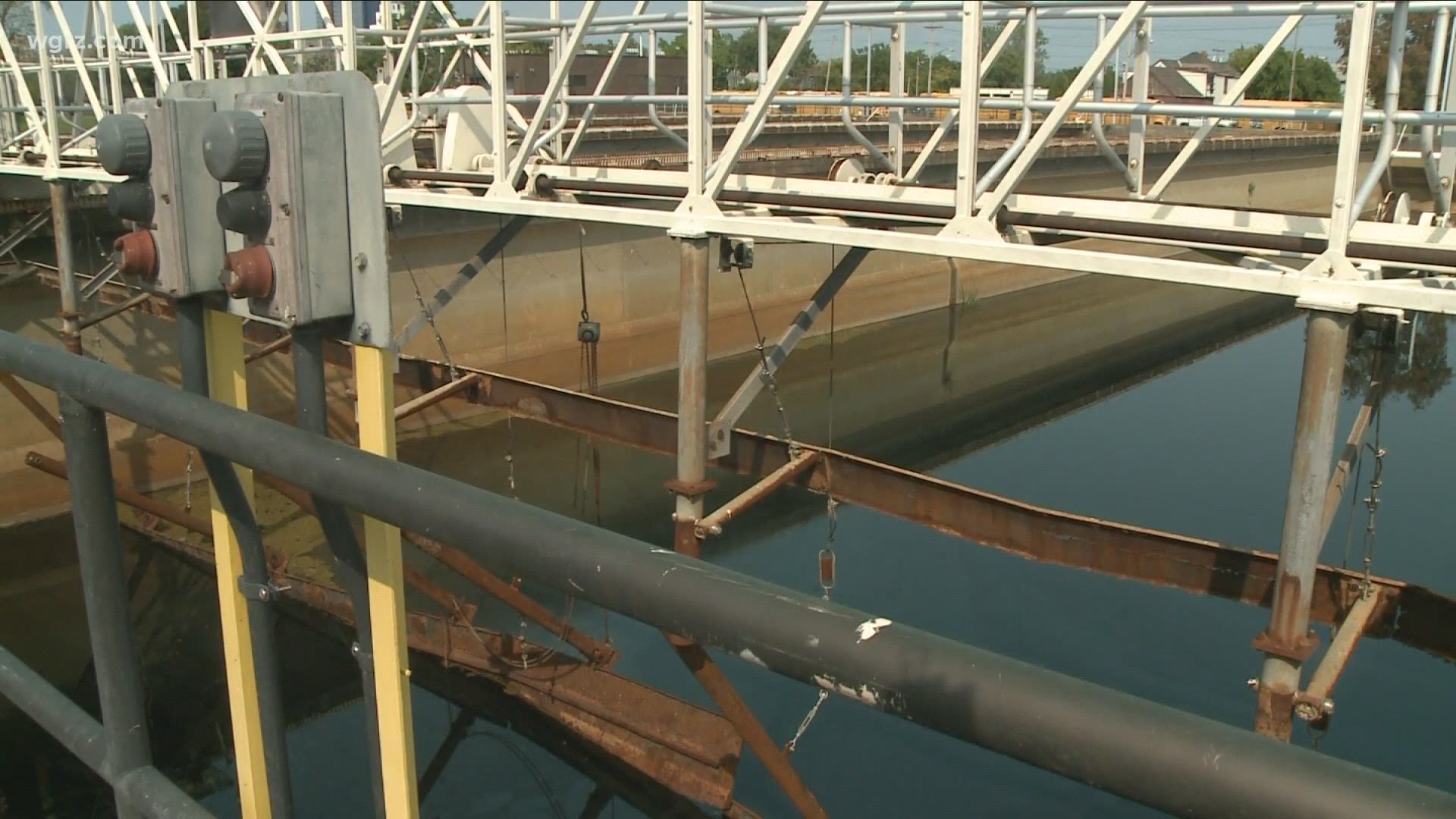BUFFALO, N.Y. — Erie County health officials are encouraged by the results of a pilot program, which has been testing waste water from sewer plants to detect the presence of COVID-19.
It's part of an effort being undertaken in many parts of the country.
"Research has shown that humans excrete the virus that causes COVID-19 in their stool," Erie County deputy health commissioner Joseph Fiegl said. "Wastewater can be tested to gather information on the population of individuals using that sewer system."
Community outreach programs may result in only a fraction of the populace being tested for COVID, and the vast majority of those who contract it show no symptoms, and would therefore be unlikely to subject themselves to testing.
However, when it come to testing wastewater, Erie County health commissioner Dr. Gale Burstein noted, "Everyone uses the bathroom at least once, and hopefully flushes the toilet."
Once they do, the connection is established between COVID and wastewater.
Pilot program
For several months the county health department has teamed with University at Buffalo scientists to test wastewater at sewer plants throughout the county.
While you couldn't track down an individual with COVID through these means, it is possible, according to researchers, to learn of outbreaks in certain geographic areas served by a specific sewer district, and to find out much faster than waiting for diagnosed cases or hospitalizations to spike.
According to those involved in the pilot program, their sampling data has largely mirrored the past incidents of COVID locally.
While she used the term "community surveillance" to describe the effort, Dr. Burstein does not believe the state would used data gathered through such means to order an area to be locked down.
"We've not heard that the state is gong to use the results of wastewater testing to declare an area as a high prevalence area," she said.
There are practical reasons as well, such as where someone goes to the bathroom.
"Certainly, if someone lives in one area, and then they go to work in another area and go to the bathroom there, well ... then that changes the signal," said Ian Bradley, an assistant professor in the School of Engineering and Applied Sciences at the University at Buffalo, which helped spearhead the pilot program.
However, Dr. Burstein said if an area "lights up," it would give public health officials a chance to more quickly respond with resources, such as pop-up testing clinics and other resources to stay ahead of a potential outbreak.
She noted as well that the program could also be used to keep tabs on other infectious maladies such as hepatitis, influenza, and any other virus of serious concern that may come in the future.
Researchers are further encouraged, because besides mirroring prior spikes, their data was detecting trends ahead of of the normal means used to discover them.
COVID on the ropes
Perhaps the most encouraging news of the day, and a further indication that the pandemic is winding down, came when Bradley was asked what the trend shows lately.
"Since the first time this all started, in the last week or two, it's the first time we that have not been able to detect COVID in our wastewater at some locations, which is really fantastic," he said.

